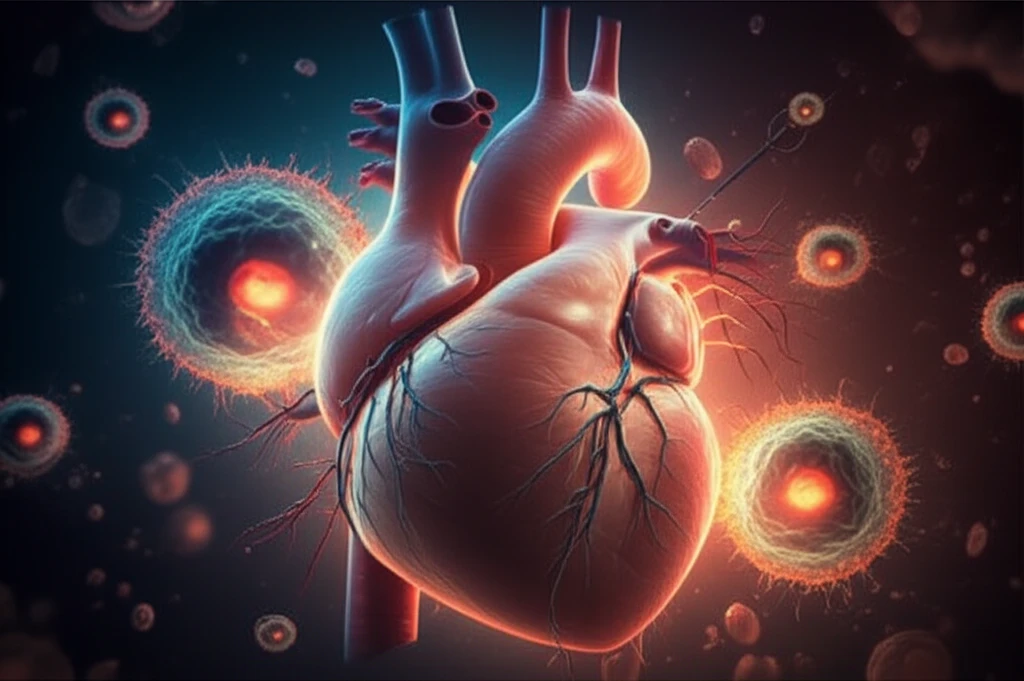
Can Neuregulin-1 Microparticles Revolutionize Heart Attack Recovery?
"New research explores how locally delivered NRG1 PLGA MPs could shift macrophage polarization, promoting heart regeneration after acute myocardial infarction."
Following a heart attack, or acute myocardial infarction (AMI), the heart undergoes significant remodeling that can impact patient outcomes. This remodeling involves molecular, cellular, and structural changes. Inflammation, once considered a secondary issue, is now recognized as a key factor in how the heart recovers post-AMI.
Macrophages, a type of immune cell, play a central role in inflammation. Different types of macrophages can either promote damage or facilitate healing. The balance between these macrophage types is critical. Researchers are exploring ways to shift this balance towards regeneration.
Neuregulin-1 (NRG1) has shown promise in preclinical studies for its ability to improve heart function after AMI. Recent research focuses on delivering NRG1 locally using PLGA microparticles (MPs) to modulate the inflammatory response. This article explores how this targeted approach could optimize heart recovery.
Understanding Macrophages and Heart Repair

The heart's response to injury involves two main types of macrophages: pro-inflammatory (piMac) and anti-inflammatory (aiMac). Initially, piMacs dominate, clearing debris. Later, aiMacs promote healing and tissue repair. The ideal scenario involves a balanced transition from piMac to aiMac dominance.
- Reduced Inflammation: Steer the immune response away from prolonged inflammation.
- Enhanced Tissue Repair: Promote the regeneration of damaged heart tissue.
- Improved Heart Function: Ultimately, improve the heart's ability to pump blood efficiently.
Future Directions and Clinical Implications
This research provides a foundation for future clinical applications. The use of NRG1 PLGA MPs represents a targeted approach to modulating the inflammatory response after AMI. While further studies are needed, this technology has the potential to significantly improve heart attack recovery and reduce long-term complications.
